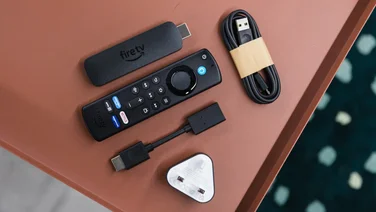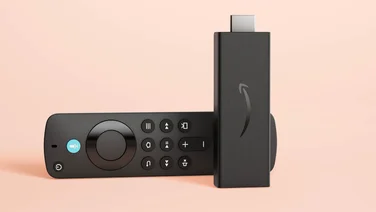To help us provide you with free impartial advice, we may earn a commission if you buy through links on our site. Learn more

Systemline has been developing multi-room music systems since the 1980’s, but the company’s latest version promises to be the simplest yet – so much so that a determined DIYer could install it themselves, without relying on a custom install expert. Systemline 7, which was officially announced this week, goes far beyond off-the-shelf multi-room speakers from the likes of Sonos by hiding the wires and electronics out of sight, and has been updated for 2014 with tablet and smartphone controls.
The centrally located system is controlled with an app via Wi-Fi, meaning you can control it from anywhere you have a Wi-Fi connection. It’s currently limited to iOS devices, although the company says an Android version is in the works for early 2015. You could feasibly add stereo speakers to every single room in a house and control them all via the app.
The Systemline app does everything you would expect from a multi-room controller; you can access all your locally stored music, stream from Deezer, Spotify or the high bitrate Qobuz, listen to internet radio and catch up on missed radio shows with BBC iPlayer. You can create playlists across services, send different tracks to different rooms or control the entire house at once, set up alarms to trigger music to wake you up, and create groups of speakers for more precise control. Because the system is set up with a web interface, it’s easy for the company to add in support for other streaming services, but unfortauntely Spotify limitations mean you can only stream one track at once; with Deezer you could send a different track to each speaker in a system.

Systemline says its app is the fastest of its kind, and we’re inclined to agree; because the audio is hard-wired, rather than transmitted wirelessly from the server, changes made through the app happen instantly. An integrated web browser and Facebook web app will save you from having to switch to another app if you want to use your tablet for something other than music, although we aren’t convinced this is much of a time saver – especially as the app is lightning fast as it is. It’s an open platform, so you can add Systemline functions to any universal remote control.

If you always want to be able to control playback in a particular room, but don’t , Systemline has in-wall TouchPanels for fixing an iPod Touch or iPad Mini in place; once wired in to the mains, it will continuously power the mounted device and prevent the screen from locking. There are versions that obscure the iPad home button, if you only plan on using the Systemline app, or panels that leave it accessible if you also want to control other home automation apps – or use the gadget for something other than music playback. The front panel lifts off if you want to upgrade the tablet to a newer model, or take it with you on the move.
Systemline has also developed a physical keypad, for rooms where tablet controls aren’t practical. Installed in a standard 50mm wall socket, it can start and stop playback, change volume and switch between pre-selected playlists or favourites, so you can keep listening in the tub even if your tablet isn’t waterproof. As it’s an open system, you can also add physical button controls to an existing building management or automation unit.

The system also supports TV sound with an optional Local Input Module, repurposing any speakers in a room to give typically quiet TV speakers a boost. Once hooked up, turning on a TV will automatically switch the audio from a currnetly playing track, then switch back when you turn it off again. Remote control learning codes can also let you control volume with a standard TV remote, saving you the need to carry a tablet with you at all times.
Behind the scenes, two boxes handle all the heavy lifting; NetServer and NetAmp. NetServer acts as central storage for all your music, with a 320GB in the basic model expandable up to 2TB if required, and streams music services from the web once connected to your router. It can store high-quality, 24bit/192kHz files, supports automatic CD ripping and album art grabbing, and can transfer your existing library over the network to its internal hard disk. NetAmp, meanwhile, provides stereo amplification for each room, with two 40 watt RMS amps. It can service up to two zones, with the system as a whole supporting up to 24 rooms – assuming you add enough Amp units. The two boxes are connected digitally, so your music stays digital until it leaves the Amp.

Typically installed in a cupboard or otherwise behind-the-scenes, the system needs power and a network connection, plus wired audio cables to installed speakers in each room. It’s certainly not impossible to install by yourself, and is significantly smaller than previous generation systems so it could fit in a tiny space, but it still requires drilling and running cables throughout your house; Systemline recommends customers get an installer to fit the system, which will immediately limit its appeal.
Systemline 7 will be available through the company directly or selected resellers from today onwards, with prices dependent on the number of rooms or zones you’re looking to install. A base 4 zone system, which includes the NetAmp, NetServer and speakers, will set you back £3,000 plus installation, with each additional NetAmp costing £750. Four stereo pairs of Sonos Play:5 speakers would cost almost the same (£2,800), which just goes to show that multi-room speaker systems like Systemline aren’t exclusively for the super-rich any more.
While it’s certainly more effort than plugging a speaker into every room, Systemline 7 is a seriously slick multi-room system for anyone that can’t stand the sight of cables. It’s deceptively simple and should be particularly easy to install in new build houses or renovation projects. If you want to truly integrate music throughout the home, rather than put speakers on display or rely on Wi-Fi networks, it looks like a great alternative to off-the-shelf systems.





